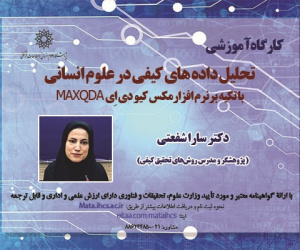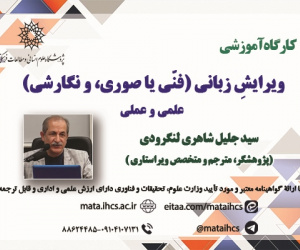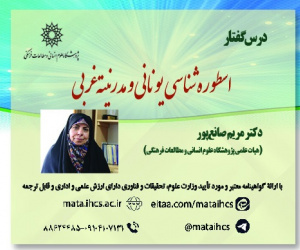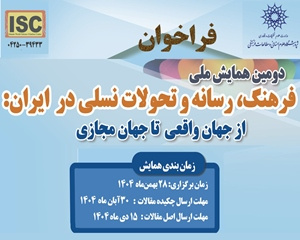ارزیابی مؤلفه های کیفیت فضایی در فضای تاریخی – گردشگری بین الحرمین شیراز ؛ ارائه راهکارهای طراحی شهری جهت بازیابی هویت مکانی
آرشیو
چکیده
پژوهش حاضر با هدف بررسی کیفیت فضایی محدوده تاریخی- گردشگری بین الحرمین شیراز به منظور توسعه راهکارهای طراحی شهری در راستای بازیابی هویت مکانی آن انجام گرفته است. این محدوده با پیشینه ای غنی از ارزش های مذهبی، فرهنگی و تاریخی، امروزه در اثر تخریبات بی رویه ناشی از سرمایه گذاری های کنترل نشده، با فرسایش هویت و کاهش کیفیت فضایی روبه رو شده است. روش پژوهش، توصیفی - تحلیلی و مبتنی بر داده های کمی است. در این راستا، شاخص های مختلفی در قالب ابعاد کالبدی، معنایی و اجتماعی- فرهنگی مورد ارزیابی قرار می گیرد تا با تعیین اولویت ها، راهکارهایی برای بهبود کیفیت فضایی و حفظ هویت مکانی این فضا ارائه دهد. گردآوری داده ها از طریق مطالعات کتابخانه ای و پرسشنامه و با روش نمونه گیری تصادفی انجام گرفته است. برای ارزیابی شاخص ها از 40 نفر از متخصصین حوزه شهری و اساتید دانشگاه و در تحلیل داده ها از آزمون های سوارا و فریدمن بهره گرفته شده است. نتایج پژوهش نشان می دهد که از بین شاخص های مورد بررسی، دسترسی، دفع فاضلاب و ارزش های زیبایی شناختی بیشترین اولویت را در بهبود کیفیت و هویت مکانی این منطقه ایفا می کنند. از دیدگاه نظری، این پژوهش درک عمیق تری از مفهوم هویت مکانی ارائه می دهد و جایگاه آن را در طراحی شهری روشن تر می کند. همچنین از منظر عملی، می تواند به عنوان الگویی برای برنامه ریزی شهری با تمرکز بر بهبود کیفیت و هویت فضاهای تاریخی مورد استفاده قرار گیرد. در نهایت، پژوهش نشان می دهد که توجه هماهنگ به بهبود ابعاد کالبدی – محیطی و به طور خاص شاخص های آن، نه تنها می تواند به بازیابی هویت مکانی بین الحرمین کمک کند، بلکه موجب افزایش رضایت شهروندان و جذب گردشگران به این منطقه می شود. توجه به این رویکرد در سیاست گذاری ها و طرح های شهری برای حفظ هویت و پویایی فضاهای تاریخی ضروری است. به همین جهت راهبردهایی پیرامون بهبود این فضا از دیدگاه طراحی شهری ارائه شده است.Evaluating the Spatial Quality of Beyn Ol-Harameyn, a Historical -Tourism Space in Shiraz, Iran: Urban Design Strategies for Recovering Place Identity
The present study aims to examine the spatial quality of the historical-touristic area of Beyn Ol-haramein in Shiraz, with the goal of developing urban design strategies for restoring its place identity. This area, with a rich history of religious, cultural, and historical values, has faced identity erosion and a decline in spatial quality due to uncontrolled investments and excessive destruction. The research method is descriptive-analytical and based on quantitative data. In this context, various indicators are evaluated in terms of physical, semantic, and socio - cultural dimensions to prioritize issues and propose solutions for improving spatial quality and preserving the place identity of the area. Data collection was carried out through library studies and questionnaires, using random sampling. To assess the indicators, 40 urban experts and university professors were consulted, and for data analysis, the Swara and Friedman tests were employed. The results show that among the indicators examined, accessibility, sewage disposal, and aesthetic values play the most significant roles in enhancing the spatial quality and place identity of the area. From a theoretical perspective, this study provides a deeper understanding of the concept of place identity and clarifies its role in urban design. Practically, it can serve as a model for urban planning focused on improving the quality and identity of historical spaces. Ultimately, the research suggests that a coordinated approach to improving the physical-environmental dimensions — particularly their associated indicators — can not only aid in restoring the place identity of Beyn Ol- haramein but also increase citizen satisfaction and attract tourists to the area. Attention to this approach in urban policy - making and planning for the preservation of the identity and vitality of historical spaces is essential. Accordingly, Accordingly, solutions within the urban design framework are proposed to improve this area from an urban design perspective.








